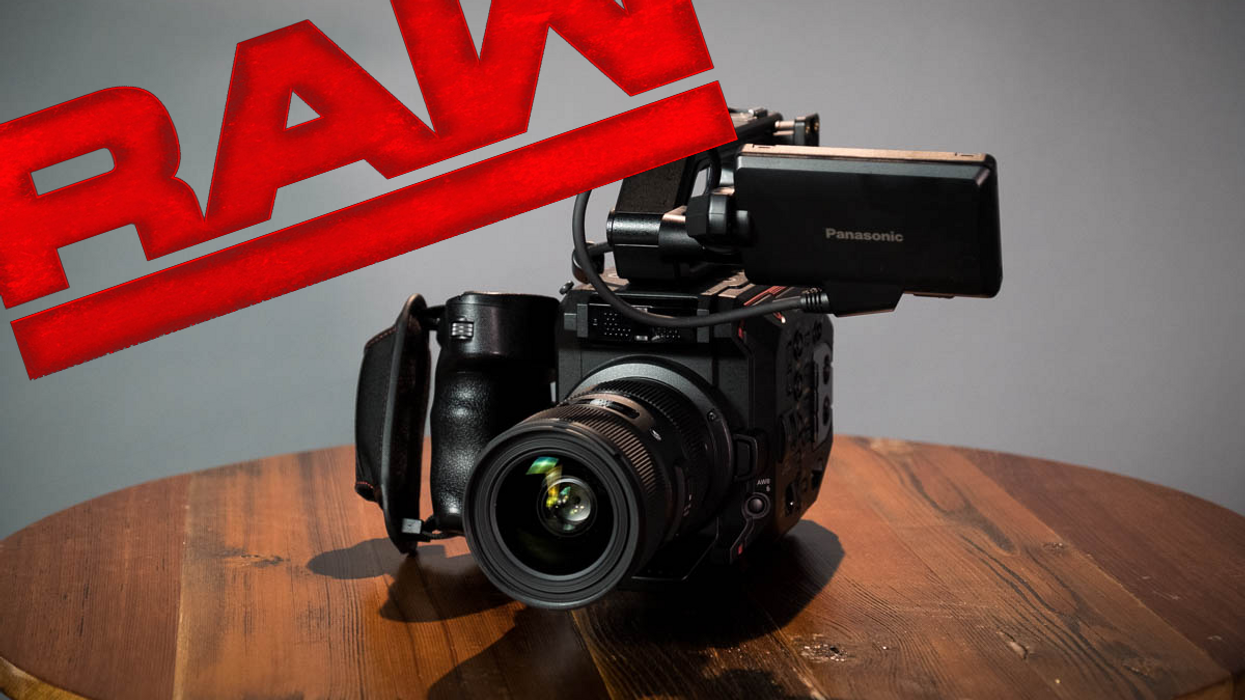EVA1 Firmware Update Unleashes Full RAW Potential
With this new update, the full RAW capabilities of the EVA1 are on their way.

We had a great time doing a hands-on review of the EVA1 earlier this year. While there was a lot to love about the camera, we definitely missed out on the ability to test raw output, which wasn't live when the camera started shipping Q4 last year. Not everyone needs a full RAW workflow, but we all want the option of RAW for when we do need it and can handle it in post.
The current EVA1 firmware release, announced today and promised by the end of March, is large enough to merit being called a 2.0 version. It includes a whole host of new features available for the popular camera, including support for external RAW recording. While waiting until the end of March can feel like forever (especially if you are in the wintry areas of the world where it kind of feels like the end of March is years away), Panasonic shipped the unit on time so we can feel pretty confident they'll ship the firmware on time as well.

In addition to the RAW output, which we know will be supported by Atomos monitor/recorders and will likely be supported by others as well, there are also several new All-I 10-bit 4:2:2 at 400Mbps formats. All-I, for those not familiar, is short for "All-Intra," which means that every single frame is only compressed within itself (intra-frame encoding), as opposed to inter-frame encoding, where a group of frames are compressed together. Filmmakers tend to prefer All-I when it is available, though it will make for larger files initially (requiring more storage), in the end you'll have an easier time in the edit. The dependable Wolfcrow has a great breakdown if you would like more info.
Most fascinating for us is a previously unnanounced feature: 2K recording up to 240fps RAW. While you can do 5.7K RAW up to 30fps and plain old 4K up to 60fps, getting 240fps in 2K formats is a super appreciated feature.
Firmware 2.0 will be a free update for all EVA1 users by the end of March.
- 4K 400Mbps 10-bit 4:2:2 29.97p/25p/24p/23.98p
- UHD 400Mbps 10-bit 4:2:2 29.97p/25p/23.98p
- 2K/FHD 200Mpbs 10-bit 4:2:2 59.94p/50p
- 2K 100Mbps 10-bit 4:2:2 29.97p/25p/24p/23.98p
- FHD 100Mbps 10-bit 4:2:2 29.97p/25p/23.98p
New Variable frame rates:
- 4K/UHD VFR up to 400Mbps 10-bit 4:2:2 1-30fps
- 2K/FHD VFR up to 200Mbps 10-bit 4:2:2 1-120fps











